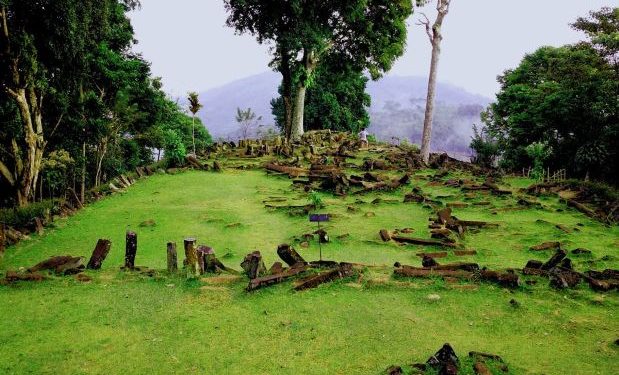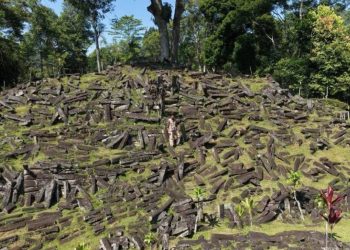Jakarta, Indonesia Sentinel — Indonesia’s Ministry of Culture has resumed excavation and restoration efforts at the Gunung Padang megalithic site in Campaka Subdistrict, Cianjur Regency, West Java, as part of a renewed effort to investigate one of Southeast Asia’s most enigmatic archaeological landmarks.
The initiative involves 10 multidisciplinary experts and over 100 local researchers. According to Ali Akbar, an archaeologist and head of the restoration team, coordination with the Ministry of Culture has been completed to finalize schedules and assign participating specialists.
“The excavation officially begins in early August,” Akbar said, as reported by Antara on Tuesday (July 29).
This phase of research will focus on the upright stone pillars visible at the surface, structures believed to be part of a prehistoric building foundation first documented by Dutch archaeologist N.J. Krom in 1914.
“The restoration will last around three months, and the research area will be adjusted based on initial assessments, including potential findings of distinct cultural layers,” Akbar added.
Spanning an area of roughly 291,800 square meters, Gunung Padang is regarded by some scholars as evidence of advanced prehistoric knowledge and architectural precision. Earlier excavations uncovered substructures beneath the surface, fueling theories about ancient civilizations lost to time.
“We suspect the presence of hidden chambers, and we’re also seeking answers about the age of the deepest layers and the reasons behind the collapse of the civilization that built it,” said Akbar.
Read Also:
Research on Mysterious Gunung Padang Megalithic Site Will be Resumed after Decade of Hiatus
The site features columnar joints of volcanic rock arranged to form terraces, steps, walls, and pillars. Previous studies date the surface pillars to approximately 500 CE, a deeper layer to 500 BCE, and the most ancient stratum as far back as 5,200 BCE.
Gunung Padang has long attracted global speculation, with some suggesting it could be “the oldest historical site in the world” or even “an ancient pyramid older than Egypt’s Giza.”
In a separate statement, Culture Minister Fadli Zon confirmed that restoration efforts will proceed gradually in order to preserve the site’s authenticity.
“We’re continuing research at Gunung Padang this year. Restoration will follow scientific studies and be conducted in stages,” Zon said.
The ministry hopes that renewed research will shed light on previously unanswered questions and solidify Gunung Padang’s role as a key part of Indonesia’s cultural heritage.
(Raidi/Agung)























